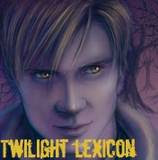Twilight by Stephenie Meyer has to be one of the best vampire books I have read in a long time since giving up on Anne Rice and her vampire series. I won’t disparage Rice’s work in this entry, but I will praise Meyer for a job well done. It has been several months since a book has captivated my attention to the point where I lose track of time. I read over 200 pages of the book yesterday evening and said to my husband as he walked through the door, “Boy, you are home early.” To which he replied, “I’m a half hour late.” Where did the time go? Into reading about Edward Cullen and Isabella Swan, perhaps.
Unlike other vampire novels, the main vampire in this book, Edward Cullen, is a teenage boy, and Bella is also a teen. The unique morality that drives the Cullen family to hunt animals rather than humans is endearing, and certainly naive. However, readers must remember vampires, most of them anyway, were humans at one time and probably have a hard time adjusting to their new lives. So despite the moral compass governing their lives in Forks in the Pacific Northwest, they still desire human blood. The concept is simple, a boy and a girl meet and fall in love even though they are not supposed to, a boy from the wrongside of the tracks or a girl from the wrong side of the tracks; it really doesn’t matter.
The writing is very descriptive and intense. The energy between the couple leaps off the page. It is electric to follow them through the town of Forks. Their interactions with other classmates, their attempts to hid their true feelings from one another and their fellow classmates–something teenagers often do in high school in the first place–and their quirky introductions to parents., even his vampire parents. You might think I am giving away too many details about this book, but there is so much more beneath the surface.
I highly recommend this book to anyone interested in vampires or merely in human relationships, and yes Edward is human to an extent. It is the combination of those human qualities and his vampire attributes that attracts Bella, and who wouldn’t be attracted to him and his charisma.
I finished Twilight by Stephenie Meyer as you know. I have given a lot of thought to the cover choice for the book, which depicts of a pair of young arms with hands cupped around an apple. Oftentimes, I find book covers either have little to do with the book’s contents or are lame in many respects, but this cover has significant meaning given the themes in the book.
First off, Isabella Swan is forbidden fruit for Edward Cullen, much like the apple in the Garden of Eden was for Adam and Eve. However, Bella also represents his prey; the dichotomy of their relationship is summed up easily in the cover choice.
I just want to applaud the publishing house and the author for a wise choice. The image above is borrowed from the Stephenie Meyer Website.
This Book Also Was Reviewed Here:
The Bookworm




